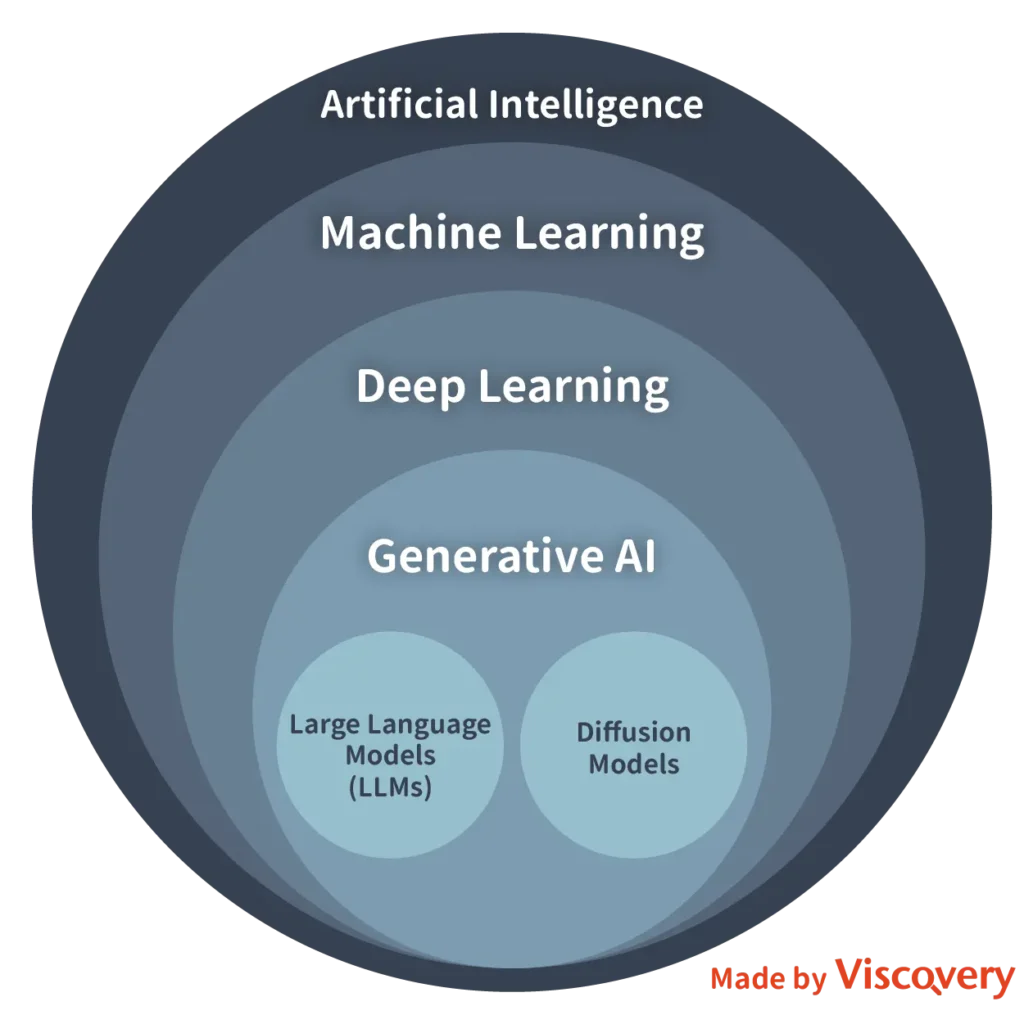
Generative AI: The Magic of Teaching Machines to Create
August 16, 2024
Technology is advancing rapidly, and AI’s applications are expanding across various fields. Machine learning gives computers the ability to learn autonomously, while deep learning takes it a step further by enabling AI to understand complex patterns. Generative AI is a revolutionary breakthrough in AI technology; it not only analyzes data but also creates content, significantly transforming our world. In this article, we’ll break down this technology and explore its potential impact across industries.
What is Generative AI?
Generative AI is an AI that can “create” new content. Think of it as an artist who, drawing from past experiences, can produce new artwork, text, images, audios, videos, code, or even help design products. Unlike traditional AI, which only recognizes and analyzes data, generative AI starts from scratch, bringing us new ideas and creativity.
How Does Generative AI Work?
Generative AI operates like the “memory” and “imagination” in our brain.
Take drawing as an example. The AI first memorizes thousands of images, and when asked to draw, say, an “amusement park in the desert,” it uses elements from its memory of deserts, oases, and amusement park to generate a unique image.
This process mirrors how humans learn, imitate, and then create.
Similarly, in text generation, it first absorbs vast amounts of written material and then learns to produce new, creative articles or conversations.

Core Technologies of Generative AI
Generative AI utilizes deep learning technology. This technique resembles a complex network that mimics the human brain’s thought processes.
Previously, technologies like Generative Adversarial Networks (GANs) and Variational Autoencoders (VAEs) were at the core of this field.
As technology evolves, these models are being replaced by more advanced methods. For text and image generation, the main technologies now include Large Language Models (LLMs) and Diffusion Models.
- Large Language Models (LLMs): These models can generate text, such as writing articles or answering questions. Trained on vast amounts of text data, they can understand and generate natural language. Examples include OpenAI’s ChatGPT, Google’s Gemini, and Meta’s LLaMA.
- Diffusion Model: These models excel at generating images or videos. They can create new visual content based on text or image prompts, with applications ranging from artwork to product design. Examples include OpenAI’s DALLE-3 and Google’s Imagen.
From a broad perspective, these terms and technologies interconnect as follows:

Applications of Generative AI
The applications of Generative AI are vast and growing.
In advertising and marketing, Generative AI can produce eye-catching ad copy and visual content. In customer service, AI-driven chatbots can answer customer inquiries in real time, improving service efficiency. Generative AI also assists businesses in planning marketing strategies based on market trends. In the healthcare field, it can generate new compounds from vast chemical data, speeding up drug development, or simulate and optimize molecular structures to enhance drug efficacy and safety.
As technology progresses, Generative AI is opening new possibilities across industries, increasing operational efficiency and improving quality of life.
The Limitless Potential of Generative AI
Generative AI technology is redefining how we interact with data. From basic content creation to complex creative processes, its range and potential continue to expand. If you’re interested in AI applications, visit our website to explore more about how AI can help your business grow.

(The featured image was generated using ChatGPT’s AI tools for illustrative purposes only.)

